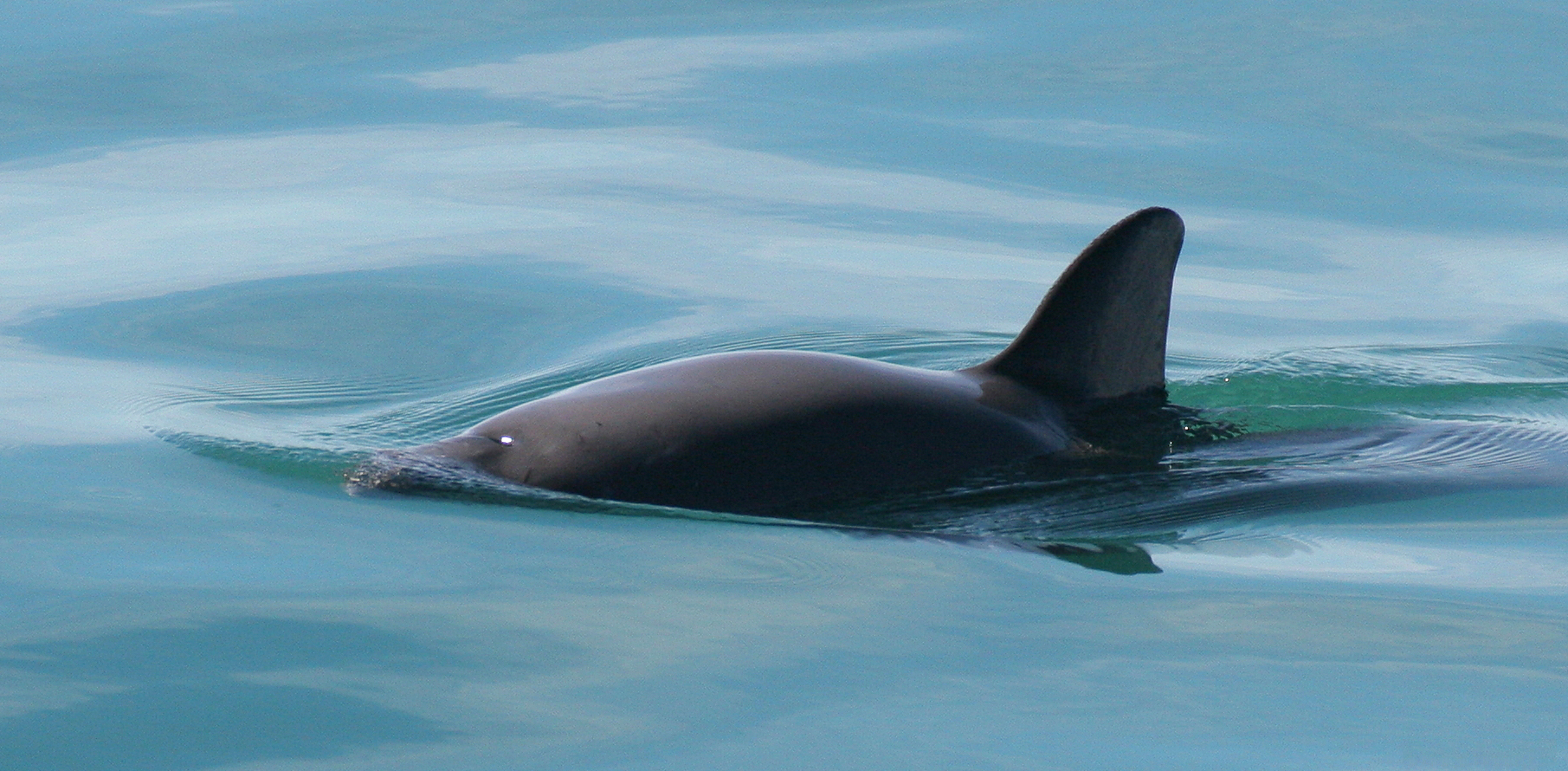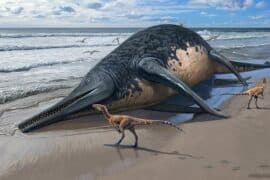Vaquita
(Phocoena sinus)

Description
The vaquita (Phocoena sinus) is a species of porpoise endemic to the northern end of the Gulf of California in Baja California, Mexico. Averaging 150 cm (4.9 ft) (females) or 140 cm (4.6 ft) (males) in length, it is the smallest of all living cetaceans. The species is currently on the brink of extinction, and currently listed as Critically Endangered by the IUCN Red List; the steep decline in abundance is primarily due to bycatch in gillnets from the illegal totoaba fishery. The smallest living species of cetacean, the vaquita can be easily distinguished from any other species in its range. It has a small body with an unusually tall, triangular dorsal fin, a rounded head, and no distinguished beak. The coloration is mostly grey with a darker back and a white ventral field. Prominent black patches surround its lips and eyes. Sexual dimorphism is apparent in body size, with mature females being longer than males and having larger heads and wider flippers. Females reach a maximum size of about 150 cm (4.9 ft), while males reach about 140 cm (4.6 ft). Dorsal fin height is greater in males than in females. They are also known to weigh around 27 kg (60 lb) to 68 kg (150 lb). This makes them one of the smallest species in the porpoise family. Vaquita habitat is restricted to a small portion of the upper Gulf of California (also called the Sea of Cortez), making this the smallest range of any marine mammal species. They live in shallow, turbid waters of less than 150 m (490 ft) depth. Vaquitas inhabit murky warm waters within 26 kilometres (16 mi) of the shoreline since there is high food availability and a strong tidal mix. Since they are able to survive in shallow waters, their triangle-shaped dorsal fin sticks out above water and they are commonly mistaken for dolphins (Center for Biological Diversity, n.d). The vaquita was defined as a species by two zoologists, Kenneth S. Norris and William N. McFarland, in 1958 after studying the morphology of skull specimens found on the beach. It was not until nearly thirty years later, in 1985, that fresh specimens allowed scientists to describe their external appearance fully. The genus Phocoena comprises four species of porpoise, most of which inhabit coastal waters (the spectacled porpoise is more oceanic). The vaquita is most closely related to Burmeister's porpoise (Phocoena spinipinnis) and less so to the spectacled porpoise (Phocoena dioptrica), two species limited to the Southern Hemisphere.
Taxonomic tree:







